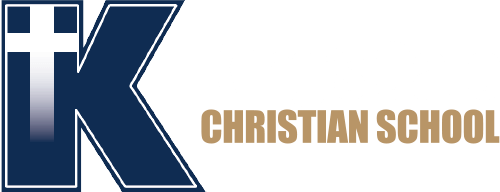“When my son was very young, we discovered that he was a ‘sensory seeking child’; meaning he seemingly had the energy of three kids. I visited with King’s Gate’s Director, Wyndi Bradley and after our visit, I knew it was the right school for my son. He is a happy, smart, and still energetic (but in control) child.”
Brian Smith
King's Gate Christian School
HANDS-ON LEARNING

We hear the term “hands-on learning” or, sometimes called “experiential learning,” but what does it mean and why does it matter to students?
What is hands-on or experiential learning?
Hands-on or experiential learning is the act of doing in order to learn. It engages all five senses and both sides of the brain as students put into practice, with their hands, the lessons they’re learning. It reinforces what has already been learned as students test their own theories, scaffolding new understanding on what they already know, allowing students to gain a deeper understanding of concepts. Students practice problem solving and critical thinking which leads to better retention of the lesson taught.
Why is hands-on or experiential learning good for students?
Hands-on/experiential learning bridges the gap between theory and reality and shows how subject matter applies to real life. Students practice creativity and develop new ways of thinking about things when they engage their whole bodies in their learning.
Although hands-on learning builds fine motor skills in young students, older students also benefit from hands-on learning. When they put into practice life skills and scholastic lessons they’ve learned, they begin to see and understand where their skills and preferences are best used in the workforce.
The most common use of hands-on learning is in our science lab and Wonderground where students interact with nature. Students allowed access to hands-on learning in all other subjects retain grammar, literature, math, history, social studies, and art principles better than those only exposed to lecture and reading.

Students of schools that employ hands-on learning activities generally enjoy learning more, are more motivated to learn, show increase skill proficiency (including communication skills), and become independent and critical thinkers.
At King’s Gate, you’ll find all of our students – from age 1 through high school – engaged in hands-on activities in all subjects.
Child Development Center
Our Primer, Preschool and Pre-K classes engage in sensory tables matching our learning theme for the week. King’s Gate sensory tables may include water, dirt, rice, flour, sand, shaving cream or other elements encouraging touch and feel. Puzzles, stacking toys, puppets, and real-life imitation play engage the brain and encourage problem-solving.


Elementary & Intermediate
Our elementary and intermediate students participate in science projects and activities from Kindergarten through 6th grade. Some participate in a living history museum, acting out parts of famous Oklahomans. Others build everyday items with craft supplies. Our outdoor Wonderground provides opportunities to learn citizen science, the science of taking care of our resources. Students care for our gardens and observe nature’s visitors. Field trips are great hands-on learning opportunities.
Upper School
Middle and high school-aged students get hands-on lessons in our state-of-the art science lab. Through the use of microscopes and Bunsen burners, they test theories. They interact with nature in our outdoor Wonderground classroom. Through our WinTerm and Life Launch programs, our students gets hands-on lessons in life skills and careers like computer programming, archery, cooking, drama, self-defense, balancing checkbooks, and budgeting based on salary and family size.

While most students are naturally visual, auditory or reading/writing learners, all students benefit from hands-on learning.

